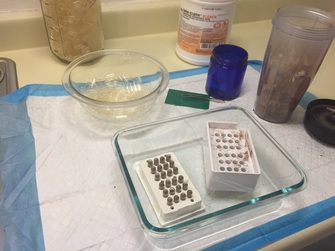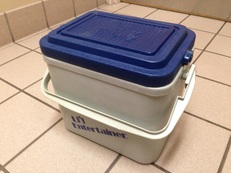Inspired by some feedback from a recent client, I wanted to write up my thoughts on placenta capsules as "magic" or as something that will always prevent postpartum depression and anxiety.
This client asked us to fill her capsules only half full because she is sensitive to medications, herbs, etc. Here is what she had to say a couple months after her baby was born:
"As a follow-up, if you remember you filled my capsules 1/2 way and I wanted to fill you in on my experience. I took one capsule a day post birth for about 3 or so weeks and we (hubby and I) could certainly tell the days when I took them vs the days when I forgot to take them. I am no longer taking them now, however I can tell you HUGE improvement with PP vs my first time around with first child. It was pure hell with PP. This time, hands down, way better. I still have PP and PP anxiety, however NOTHING compared to my previous experience. That said, THANK YOU, this changed my entire experience of being a mom and being able to remember what actually happened vs it being a blur and sadness."
This client asked us to fill her capsules only half full because she is sensitive to medications, herbs, etc. Here is what she had to say a couple months after her baby was born:
"As a follow-up, if you remember you filled my capsules 1/2 way and I wanted to fill you in on my experience. I took one capsule a day post birth for about 3 or so weeks and we (hubby and I) could certainly tell the days when I took them vs the days when I forgot to take them. I am no longer taking them now, however I can tell you HUGE improvement with PP vs my first time around with first child. It was pure hell with PP. This time, hands down, way better. I still have PP and PP anxiety, however NOTHING compared to my previous experience. That said, THANK YOU, this changed my entire experience of being a mom and being able to remember what actually happened vs it being a blur and sadness."



 RSS Feed
RSS Feed
